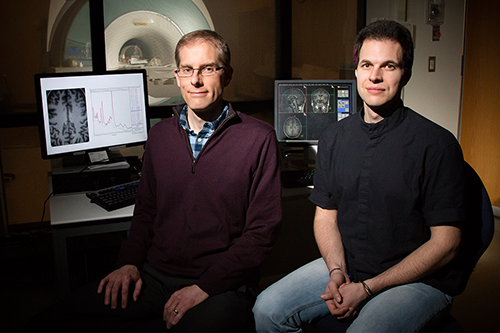

A healthy brain is critical to a person’s cognitive abilities, but measuring brain health can be a complicated endeavor. A new study by University of Illinois researchers reports that healthy brain metabolism corresponds with fluid intelligence—a measure of one’s ability to solve unusual or complex problems—in young adults.
What’s more, researchers concluded that fluid intelligence depends on brain metabolism and health. While overall brain size is genetically determined and not readily changed, levels of the molecule N-acetyl aspartate (NAA), a known marker of metabolic activity in the brain, and brain metabolism may respond to health interventions including diet, exercise, or cognitive training.
Prior studies of the relationship between brain metabolism and fluid intelligence have been inconsistent. This time, however, researchers set out to address previous contradictions and oversights.
“Fluid intelligence is one of the most useful cognitive measures available,” said U. of I. doctoral candidate Aki Nikolaidis, who led the research with Ryan Larsen, a research scientist at the Beckman Institute for Advanced Science and Technology, and Beckman Institute director and psychology professor Arthur Kramer.
“(Fluid intelligence) relates to an individual’s job satisfaction and salary level, among other real-world outcomes,” he said.
The researchers measured concentrations of NAA using magnetic resonance spectroscopy. Nikolaidis then looked at the relationship between NAA concentrations in different regions of the brain and fluid intelligence.
“MR spectroscopy allows us to go beyond simply imaging the structures of the brain. It allows us to image the capacity of the brain to produce energy,” Larsen said.
With his collaborators, Beckman Institute director Arthur Kramer found that brain metabolism is related to fluid intelligence.
Previous research relating MR spectroscopy data to cognition has been inconsistent. One explanation may be that researchers fail to account for all relevant factors that relate to cognition, including brain size, in their analyses, Nikolaidis said. One goal of the current study was to address these previous contradictions.
“We wanted to do a more definitive study with a large sample size and with a higher quality methodological approach of acquiring the data,” Nikolaidis said. The researchers were able to create a more detailed map of NAA concentration in the brain than previous studies had, he said.
The team found that NAA concentration in an area of the brain linked to motor abilities in the frontal and parietal cortices was specifically linked to fluid intelligence but not to other closely related cognitive abilities. The brain’s motor regions have a role in planning and visualizing movements as well as carrying them out, Nikolaidis said. Mental visualization is a key element of fluid intelligence, he said.
This research was funded by the Office of Naval Research; Abbott Nutrition through the Center for Nutrition, Learning, and Memory at the U. of I.; and the National Science Foundation. The results are reported in the journal Cerebral Cortex.


